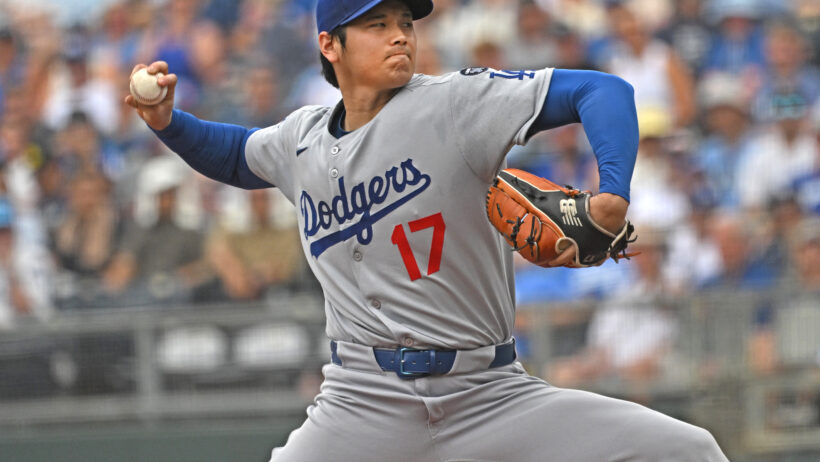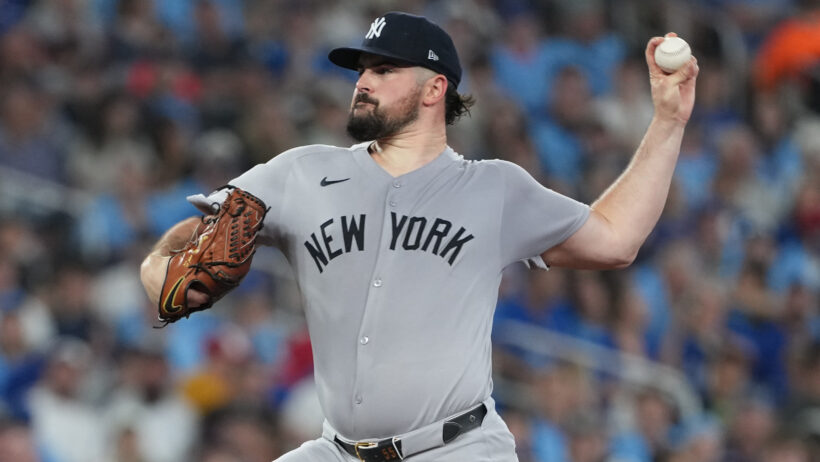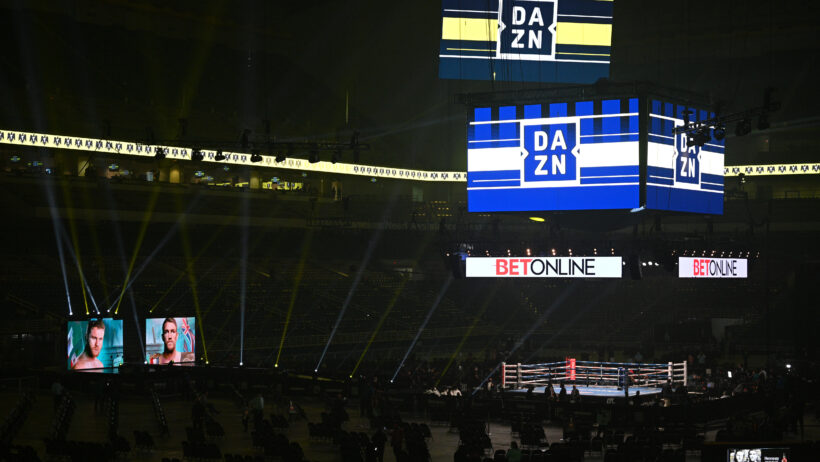The Best Resurrections in Sports History (Just in Time for Easter!)
By Sascha Paruk in Entertainment
Updated: January 17, 2018 at 9:39 am ESTPublished:

The Browns, the Knicks, the White Sox: once proud organizations with a winning history, they’re now places where careers go to die. It’s sad seeing Carmelo Anthony’s boisterous career potentially coming to a whispery end in New York. But if there’s one thing I learned in Sunday School, it’s that not every death is final. (My new altar of worship, Game of Thrones, would later confirm this.)
While sad-sack teams snuff the life out of former superstars, some recently retired athletes find their lifeless bodies reanimating after some time away. It happened to Marshawn Lynch. It happened to Sugar Ray Leonard (like 37 times). And soon, it could happen to Tony Romo. But this is one of the rare instances where I’m looking back instead of looking ahead.
As we approach our nation’s most resurrecty holiday, let’s count down the best comebacks in sports history.
I’ve left all deities off the list, even though Jesus was amazing for the Patriots in Super Bowl LI.
Don’t like my order? Go to our Facebook page to vote on the best comeback of all time, or post in the comment section below.
6. Roger Clemens
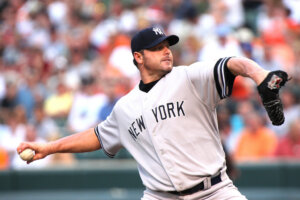
As you’ll learn if you actually read the entirety of this article (not holding my breath), my list of best comebacks focuses on people who took significant time off from their sports. Roger Clemens is the exception.
Clemens put together one of the most impressive 20-year careers of any MLB pitcher in history (310 wins, 4,099 strikeouts, six Cy Young awards, one MVP) before retiring in 2003 at 41 years old. After having an off-season to think about it, Roger decided he had more left in the tank and returned in 2004, signing with his hometown Astros. It would have been reasonable to assume he’d be a shell of the player who dominated the league from 1986 to 1998. After all, he hadn’t posted a sub-3.50 ERA in his past five seasons.
But someone forgot to tell Clemens he was washed up. His 2004 season was the stuff of legend. He went 18-4 with a 2.98 ERA, 218 Ks, and a 5.4 WAR. He also won his seventh Cy Young, becoming the oldest player (42) to take home the honor. Though he didn’t win the award the next year (because his win/loss numbers weren’t as good and voters are dumb), his 2005 season was arguably better: 1.87 ERA, 7.8 WAR.
We’ve seen control guys (like Jamie Moyer) and knuckleballers (like Hoyt Wilhelm, Phil Niekro, and Tim Wakefield) pitch well into their 40s. But Clemens was a power pitcher; their longevity is usually much more limited, Nolan Ryans of the world notwithstanding. The fact that Clemens was able to be a dominant pitcher post-retirement has to be given its due, even though he never took significant time off from baseball. (We won’t get into his ill-advised 2012 Independent League comeback.)
5. Michael Vick
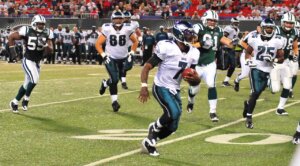
Hoo boy, Mike Vick in a “resurrection” article? That’s not going to sit well with … probably anybody. I’m not going to lie: I’m partly including Vick to get a rise out of readers. But there is also a compelling argument that his 2009 comeback was one of the most impressive in the history of sports, and it has as much to do with the resurrection of his public image as the resurrection of his playing career.
Vick fell from grace circa 2007 when he was embroiled in a dog-fighting scandal, ultimately spending 18 months in Leavenworth. He missed the entire 2007 and 2008 seasons. When your success is almost entirely predicated on sheer athleticism, a two-year hiatus is massive. Fast-twitch muscle fibers don’t last forever, and they don’t get twitchier by sitting in a jail cell. So there were serious questions whether Vick would ever be able to crack an NFL roster again.
There was also a serious question whether any team would risk the media-backlash of signing a player who’d been involved in such an abhorrent criminal activity. His former team, the Falcons, wanted nothing to do with him. Lucky for Vick, the Eagles were willing to give him a second chance.
Vick showed glimpses in limited time in 2009. Then he wowed the NFL in 2010, starting 12 games for the Eagles, posting a career-best 100.2 passer rating, and rushing for 676 yards and nine touchdowns. His Pro-Bowl performance led Philly to an NFC East crown and he was named Comeback Player of the Year. He went on to have another solid season in 2011 before starting to fade in 2012 at the age of 32.
Arguably overshadowing Vick’s play was his newfound maturity. He claimed to be a changed man and, by all accounts, he returned to the league a more focused, disciplined worker; the erstwhile arrogant wunderkind became the consummate teammate and there were now more people chanting his name than protesting his presence.
Of course, all of that comes with the caveat that he was playing in Philadelphia which, last I checked, was filled with Philadelphians. They might not be the best social-conscience barometer.
4. Mario Lemieux

Mario Lemieux is the antithesis of Vick’s controversial comeback story. In his prime, he was arguably the single most dominant player in NHL history and was (is) revered by hockey fans the world over. In 1992-93, he was on pace to challenge Wayne Gretzky’s single-season goal and point records. Then he was diagnosed with Hodgkin’s Lymphoma and missed significant time due to radiation treatments. Super Mario battled a range of health issues over the next few years, missed the entire ’94-95 season, and was forced to retire in 1997 when he was just 32 and still at the top of his game.
Four years later, the legend returned to the Penguins midway through the 2000-01 season, picking up right where he left off. Mario had three points in his first game back, including an assist on his first shift. It was a fitting return for the man who scored a goal on his first ever shift in the NHL. He wound up scoring 76 points in just 43 games during his comeback year.
His next season was limited to just 24 games due to injury, but he still averaged well over a point per game (31). He managed 67 games in 2002-03 and scored 91 points, finishing top-ten in scoring despite playing 10-15 fewer games than the rest of the league-leaders.
A second brief comeback followed his second retirement (2004), but it was his run from 2000-2004 that puts him on this list. The hockey world was robbed of its greatest show when Lemieux was elbowed out of the game in the late 90s. His perseverance to come back in his late 30s after battling cancer, spinal disc herniation, chronic back pain, and tendinitis was awe-inspiring. The fact that he managed to be one of the most dominant players in the sport during his return puts him in the comeback pantheon.
3. Dana Torres

Dana Torres won her first Olympic gold medal in 1984 at the tender age of 17. She put together a remarkable career, accumulating four total Olympic medals, before retiring in 1992. After seven years out of competitive waters, she decided her medal chest looked a little empty. Now 33 years old, the odds weren’t in her favor when she attempted to make Team USA for the 2000 Olympics in Sydney. Not only did she make the team, she more than doubled her medal total, winning two gold and three Bronze in Australia, including her first three in individual events.
That’s one impressive comeback and Torres justifiably retired for a second time after Sydney.
Roughly seven years later, she did it all over again at age 40! In 2007, she set a new US record in the 50-meter freestyle. In 2008, she once again cracked the US Olympic team and went on to add three more silver medals to her pile in Beijing.
2. George Foreman

Big George hung up his gloves after a spiritual awakening in 1977. He stayed away for a decade. In 1987, at the ripe old age of 38, Foreman thought, “I have way too many braincells left” and launched a far-fetched comeback attempt with the goal of facing Mike Tyson. Most people figured he’d stick around for a few money-making fights and then fade back into the darkness. Instead, he went onto fight 33 more times, and racked up 23 straight wins before falling to Evander Holyfield in a 1991 heavyweight title fight.
What ranks him so high on this list is the fact that the loss to Holyfield didn’t end his career. He kept up his quest for the belt, despite being well over 40 by that point. After the quality fat dripped off the heavyweight steak, Foreman got another shot at the WBA, IBF, and lineal heavyweight titles in 1994 against Michael Moorer, who had just earned his belts with a stunning upset of Holyfield. Moorer outclassed the aged Foreman for basically the whole fight. Then, in round ten, this happened, sending geriatrics everywhere in search of their old mitts.

1. Michael Jordan

Remember when Michael Jordan retired from the NBA to play baseball? That wasn’t a bad dream from your childhood. That actually happened. The best thing about the 1994-95 MLB strike was that it led to Jordan returning to his first love. He re-joined the Bulls at the tail end of the 1994-95 season and led them to the Eastern Conference semis. Good for a guy who hadn’t played in a couple years, but certainly not Jordan-esque.
What followed was vintage Mike.
MJ led the ’95-96 Bulls to the best record in NBA history (at the time) and would go on to add three more championship rings (’96, ’97, ’98) to his already crowded hands. He was named Finals MVP in both 1996 and 1998.
But the best part of the Jordan comeback wasn’t getting to witness the greatest basketball player of all time paint more on-court masterpieces. It was getting to witness the greatest basketball player of all time run show with Foghorn Leghorn. Space Jam forever!
Now let’s all forget that he also made a second comeback with the Wizards in 2001.

Managing Editor
Sascha has been working in the sports-betting industry since 2014, and quickly paired his strong writing skills with a burgeoning knowledge of probability and statistics. He holds an undergraduate degree in linguistics and a Juris Doctor from the University of British Columbia.

